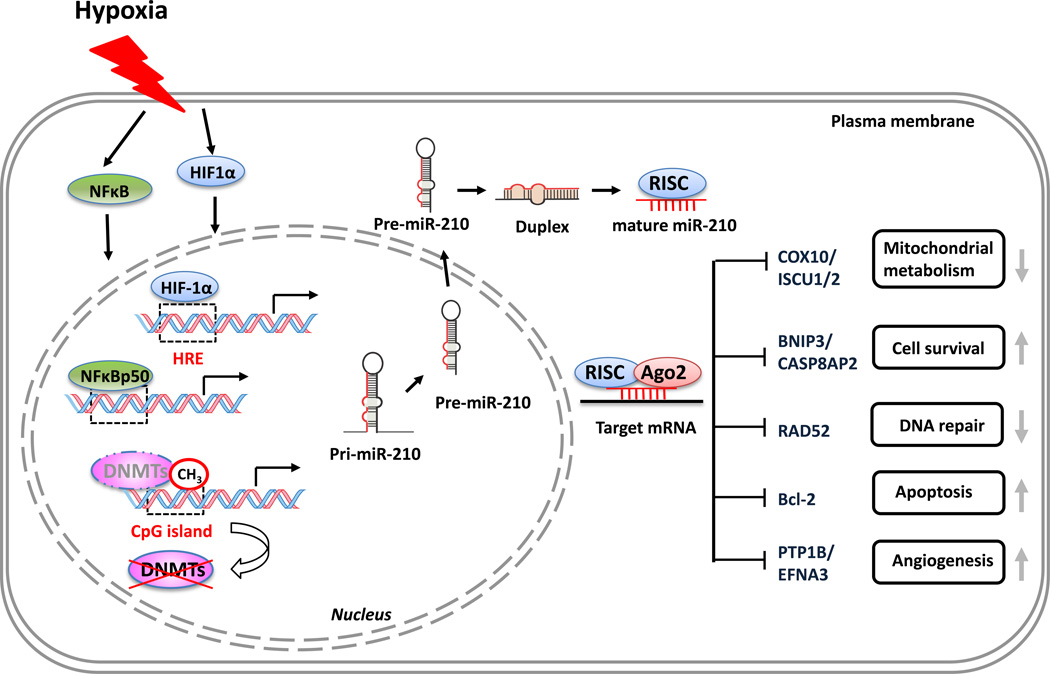Figure 3.
Summary of miR-210 upregulation mechanisms under hypoxia and its target genes. Hypoxia induces miR-210 upregulation via hypoxia inducible factor (HIF)-1α-dependent and -independent pathways. HIF-1α binds to the hypoxia responsive element (HRE) region and initiates gene transcription: the so-called ‘HIF-1α- dependent pathway’. Hypoxia activates nuclear factor (NF)-κB, which regulates miR-210 transcription by binding to the promoter of miR-210. Hypoxia-induced demethylation by releasing DNA methyltransferases (DNMTs) from CpG islands or inactivating DNMTs also increases miR-210 expression. These represent the HIF- 1α-independent pathway. In the cytosol, pre-miRNA-210 is processed to mature miR-210, binds to 3’ untranslated region (UTR) and represses the expression of a subset of genes associated with a sequence of cellular functions, including mitochondrial metabolism (COX10/ISCU1/2), apoptosis (Bcl2/BNIP3/CASP8AP2), angiogenesis (PTP1B/EFNA3), and DNA repair (RAD52). Abbreviations: Ago2, Argonaute 2; RISC, RNA-induced silencer complex. For definitions of gene symbols, please see the main text.

